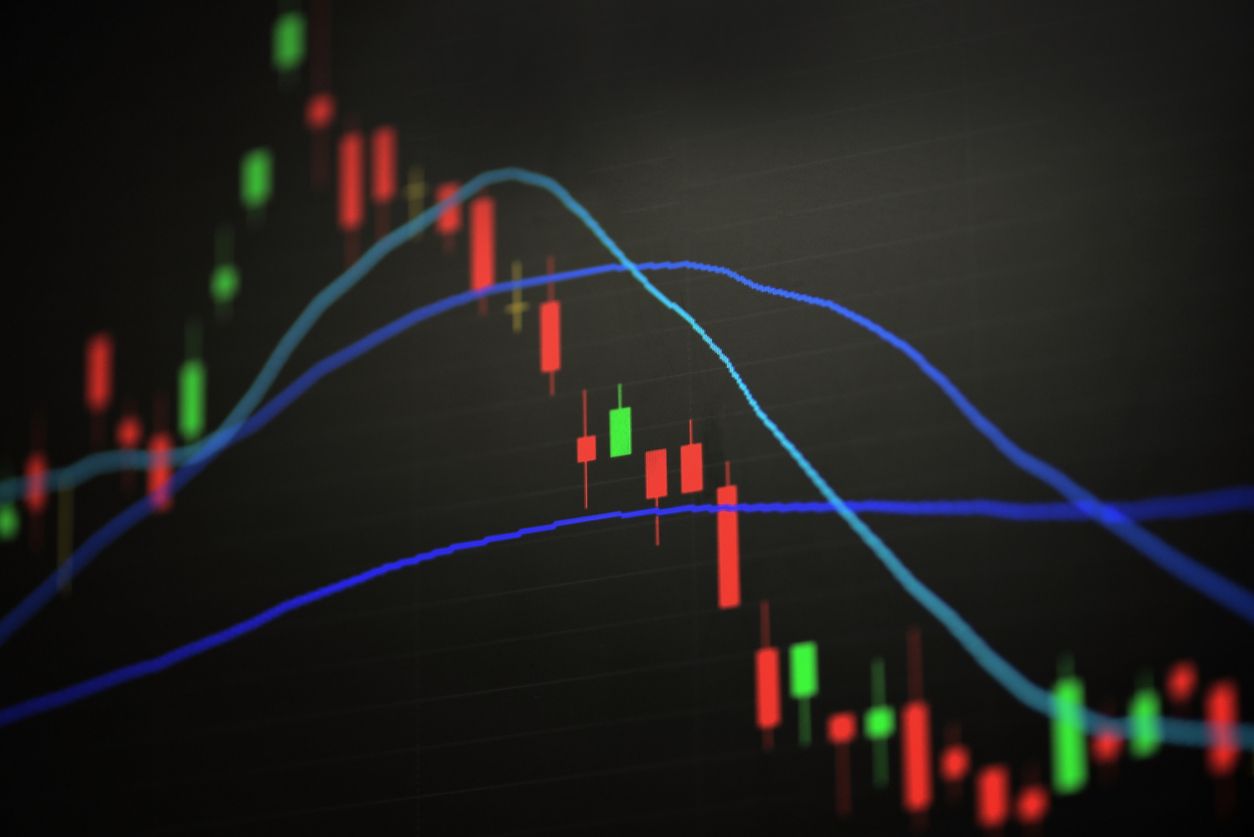Why Proper Trading Strategy Management Is Essential For Long-Term Success

Trading in financial markets can be a highly rewarding but equally challenging pursuit. While some traders may have success in the short term, achieving long-term success requires a proper trading strategy and management.
A trading strategy provides a roadmap for making informed decisions on when to enter and exit trades and how to manage risk effectively.
Similarly, trading management involves implementing and executing the strategy with consistency and discipline, which can help minimize impulsive trading and control emotional decision-making.
Without a well-defined strategy and management approach, traders can fall into the trap of chasing profits, taking on too much risk, and ultimately jeopardizing their long-term success.
Thus, proper trading strategy and management are essential for traders seeking consistent and sustainable market profits.
In this blog post, we'll explore more why proper trading strategy and management are essential for long-term success and discuss the importance of a well-defined trading plan. We'll also provide some tips for creating and implementing a successful trading strategy and management plan.
Let's start with some basics before moving on.
What are trading strategies, and what are they used for?

Proper Trading strategies are methods traders use to decide when and how to trade financial instruments to maximize profit.
These strategies include analyzing price levels, and market trends, assessing risk, and using various techniques to determine the best time to buy and sell.
It is important to understand the different types of strategies available to develop a successful trading plan.
For example, technical analysis involves studying the movements of a financial instrument over time, while fundamental analysis looks at economic, political, and social factors to determine how security might perform.
Traders can also employ scalping, momentum, and swing trading to maximize profits.
Some trading strategies are sensitive to accurate timing, they can be focused on intraday trading, weekly swings, or even quarterly positions, in any of these cases, automated detection using tools like market scanners can be a crucial component of the strategy, improving accuracy and detecting valuable opportunities.
However, it is important to have a robust, effective trading strategy to maximize profits while minimizing risk.
13 popular trading strategies
- Trend trading
- Momentum trading
- Range trading
- Pairs trading
- Gap trading
- Reversal trading
- Breakout trading
- Arbitrage
- News trading
- End-of-day trading
- Swing trading
- Scalping trading
- Position trading
Trend trading

Trend trading is a trading strategy that focuses on identifying a financial asset's price movement and taking positions in that direction.
Trend traders believe that financial assets tend to move in long-term trends, and by following those trends, they can profit from the market's momentum.
In trend trading, traders use technical analysis to identify patterns in a financial asset's price charts and make decisions based on them.
They may also use other indicators, such as moving averages or momentum indicators, to confirm the trend's direction and make entry and exit decisions.
It is a popular strategy among traders seeking to profit from medium to long-term market trends and can be used in bullish and bearish markets.
Traders should be aware that trend trading can be risky, as market trends can sometimes be unpredictable and can quickly reverse direction.
Momentum trading
Momentum trading is a type of trading strategy that seeks to capitalize on the price movements of a given security.
It involves a trader identifying and buying an increasing price asset to take advantage of the upward trend.
Once the asset has been purchased, the trader looks to sell the asset at a higher price to reap the profits from the positive momentum.
This type of trading strategy requires the trader to be vigilant in assessing market conditions; it also often uses short-term trading, as momentum shifts can be unpredictable.
There are risks associated with momentum trading due to its short-term nature, but when applied correctly, it can yield substantial rewards.
Range trading
Range trading is a strategy that seeks to capitalize on market trends by setting predetermined price levels.
This strategy is based on the belief that prices will move between support and resistance levels within a given range.
By determining the highs and lows of the range, traders can identify potential buying or selling opportunities.
For example, if a stock has been trading in a tight range between $50 and $60 for several weeks, a trader may buy when the price drops to the lower end of the range and sell when it hits the upper end.
This way, the trader can capitalize on the market trend and profit. Range trading is a low-risk, low-reward strategy that works best in highly volatile markets.
Pairs trading
Pairs trading is a strategy in which traders identify two closely correlated instruments and buy the one that is undervalued and sell the one that is overvalued.
This strategy aims to profit regardless of the market's direction, i.e., even if the market is in an uptrend, downtrend, or sideways.
Traders must first identify two closely correlated instruments and then monitor their valuation relationship to determine when one of the instruments is overpriced, and one is underpriced.
Once identified, traders will buy the underpriced instrument and sell the overpriced one to make a profit.
Pairs trading is a popular strategy among traders because of its ability to make profits in any market condition.
Gap trading

The term gap refers to a scenario in which an asset's price changes dramatically without any trading activity.
This can happen when the market opens at a different price than the previous close.
Gap traders, typically day traders, seek opportunities in gaps from the previous day's closing prices and the opening range of trading for the next day.
If the opening range rises above the previous day's close, a 'gap up' is created, and traders may take a long position. Conversely, traders may take a short position if the opening range is lower than the previous day's close.
Breakout trading
Breakout trading strategies are widely used in financial markets due to their effectiveness in predicting price movements.
These strategies are built around volume levels, as when volumes start to increase, a breakout from a support or resistance level is likely to follow.
To identify this increased activity, traders employ the money flow index (MFI), on-balance volume, and the volume-weighted moving average.
By combining these indicators with other technical analysis tools, such as trend lines and chart patterns, traders can identify and capitalize on potential breakouts.
This approach can therefore bring consistent profits in the markets when used correctly.
Arbitrage trading
Arbitrage is a risk-free trading strategy in which profit is generated from tiny price differences between two identical or equivalent assets.
It takes advantage of the discrepancy in the price of the same asset by buying the one priced lower and selling the higher one.
While this strategy can be rewarding, it also has drawbacks.
Many traders may be looking for arbitrage opportunities, so they often disappear quickly once they are discovered.
As more traders enter the market, the arbitrage edge quickly dissipates, meaning that arbitrageurs must act quickly to take advantage of the gap while it still exists.
News trading

News trading is a method of trading that analyzes the effects of economic news on a financial asset's price.
It requires analyzing the markets to determine the potential impact of news stories and making trading decisions based on this insight.
Traders may use fundamental analysis to identify potential news trading opportunities and technical analysis to determine the best way to enter or exit a position.
It is important for news traders to understand the news and the associated market conditions to succeed.
News trading can be highly profitable when executed correctly and can be used to supplement or even replace traditional trading strategies.
Position trading
Position trading is an investment strategy that focuses on taking a longer-term view of the markets and holding onto positions for longer periods.
It generally looks to capitalize on large market movements and trends that could last weeks, months, or even years.
These traders have a much longer time frame than scalpers or day traders and rely on fundamental analysis and technical indicators for their trading decisions.
It usually looks to invest in quality stocks with strong fundamentals and likely to appreciate over time.
Position trading can be a great way to gain long-term market profits and help traders reach their investment goals.
End-of-day trading
Trading at the end of the day is a prudent practice used specifically in the stock market. It involves making decisions close to or even after markets close at the end of the day.
Most often, this form of trading occurs within the last hour or two before the markets close.
Making decisions at the end of the day can be beneficial, as it allows the investor to analyze data and patterns that have developed throughout the day.
It is a useful tool for traders looking to take advantage of short-term trends over a specific day.
Swing trading

Swing trading is an investment strategy that aims to capitalize on short-term market trends. It includes buying and selling securities over days or weeks in order to take advantage of price fluctuations in the market.
Traders will typically focus on stocks, futures, and currencies that are more volatile and have higher trading volumes.
The goal of swing trading is to identify emerging trends and capitalize on them quickly before the trend reverses.
Swing traders must be able to identify entry and exit points in order to maximize their profits. Traders also need to consider risk management strategies to limit their exposure to losses.
It is a popular form of investing and can be a profitable strategy for those with the necessary skills and knowledge because it combines both, technical analysis and fundamental knowledge.
Scalping trading
Scalping trading is based on one of the shortest time frames, in this strategy traders use to take advantage of small price movements in the market. It involves buying and selling a security within seconds or minutes, in order to make a small profit or high profit with higher risk.
Traders will often use high-frequency trading techniques to identify and exploit pricing inefficiencies that can be exploited for a small gain.
Scalping trading is also used to capitalize on the news or other events that may cause short-term price movements.
However, this strategy can be risky, as it relies on quick decision-making and responding to the market and it requires bigger position size since the price action range is smaller.
NOTE: It is important to understand that strategies must be regularly monitored and adjusted as the market changes. Some strategies might perform well for a while and start to lose performance with the time. Sometimes the strategy is still good but something is changed in the execution, rather it is the trader or the algo, it is important to constantly track the trading activity. Some traders do that with a trading journal which can log all the trading activity data, then aggregate the relevant information including tagging specific strategy per trade and then provide it in reports and display it in custom analytics.

When selecting the best trading strategies for your needs, keep in mind that the optimal result will depend on the specific market condition.
Different strategies can perform well in different markets. What works for one trader may not work for another, so the best trading strategy is absolutely a subjective matter.
Ultimately, the best trading strategy is the one that works for the individual trader, and this can only be determined through research and testing.
Trading strategies & management: why are they important?
Trading strategies and management are important because they provide a clear and systematic approach to trading that helps traders to manage risk, reduce losses, and maximize profits.
They also help traders to stay focused on their goals and avoid making impulsive decisions based on emotions or intuition.
By following a well-defined trading strategy and management plan, traders can increase their chances of success in the highly competitive world of trading.

Here are some key points about why trading strategies and management are important:
Consistency: Having a well-defined trading strategy and management plan can help traders achieve consistency in their approach to the markets. By sticking to a set of rules and guidelines, traders can avoid making inconsistent decisions and improve their chances of success over time.
Risk management: Trading strategies and management plans help traders manage risk effectively. By defining the amount of risk they are willing to take on each trade, how to manage losses, and when to exit a losing position, traders can minimize their losses and protect their trading capital.
Profit potential: A perfect trading strategy can help traders identify potential profit opportunities and maximize their returns. A well-designed strategy may include strategies for identifying trends, using technical analysis, and taking advantage of market inefficiencies.
Emotional control: Successful traders must control their emotions, and a proper strategy and management plan can help them do so. With a clear plan, traders can avoid making impulsive decisions based on fear, greed, or other emotions. This can help traders stay disciplined and focused on their long-term goals.
Adaptability: Trading strategies and management plans should be adaptable to changing market conditions. By continuously evaluating their strategy and management plan and making adjustments as needed, traders can stay ahead of the curve and take advantage of new opportunities as they arise.
Ultimately, trading strategies and management plans are important for achieving consistency, managing risk, maximizing profit potential, promoting emotional control, and adapting to changing market conditions. By developing and adhering to a well-designed strategy and management plan, traders can improve their chances of success in financial markets.
Do trading strategies really work?
Whether a trading strategy works or not depends on a variety of factors, including the market conditions, the trader's skills and experience, and the specific strategy being used.
Some trading strategies can be effective in certain market conditions, while others may be less effective or even lead to losses.
In order to maximize profits, you must find a trading strategy that suits your trading style, your risk tolerance, and the condition of the markets.
To determine if a trading strategy works, traders often backtest the strategy using historical market data to see how it would have performed in the past. Remember that past performance isn't always indicative of future performance. due to changes in market conditions or other factors, backtesting is still a crucial component in effective trading because it can improve risk management by detecting cases that should be avoided, testing strategy consistency, and improving its accuracy based on statistical probabilities that can be discovered during the backtests.
Overall, the success of a trading strategy depends on the trader's ability to execute it effectively and adapt to changing market conditions.
Successful traders often understand market dynamics, risk management, and a disciplined approach to trading.
10 Tips for Trading Strategy & Management for Long-Term Success
Use a trading plan at all times
A trading plan is an invaluable tool for any trader. It is a written set of rules that allows traders to establish their entry, exit, and money management guidelines for each purchase.
By having a trading plan, traders are able to stay disciplined and consistent with their approach, as well as structure their trades to align with their overall trading objectives.
A trading plan can also help traders remember important concepts such as risk/reward ratio and position sizing.
It is essential for any trader who is looking to optimize their trading performance.
Think of trading as a business
Trading is a business and should be approached with the same commitment and dedication as any other business. It requires research, planning, and expecting expenses, losses, taxes, uncertainty, stress, and risk.
By approaching trading as a business, traders take a more serious approach to their activities and are more likely to succeed.
This is why it is important to think of trading as a business.
Take advantage of technology
Technology has become a major factor in the trading world, and those who do not take advantage of it are likely to be left behind.
Platforms like AfterPullback provide traders with an array of tools to establish a professional trading workflow with automated backtesting, market scanning, trading signal, trading journal, and more, all of these are powered by AI to improve help the trader improve the trading performance. Trading without tools like these will make the trading journey way riskier, can slow down the growth, and potentially become a pricey journey.
By staying current with new technology and products, traders can gain a competitive advantage in the market that can be both rewarding and enjoyable.
Make sure the trading capital is protected
It is essential to protect trading capital as it has taken plenty of time and effort to accumulate. It is important to remember that protecting capital does not mean avoiding losses.
All traders will experience losing trades. However, the best way to protect capital is to take calculated risks and preserve the trading business.
This will prevent any further losses and help the trader to stay on track with their trading goals. Proper risk management and capital preservation strategies should be implemented to ensure success.
Know the markets
It is vitally important for traders to have a comprehensive understanding of the markets when making trading decisions.
Constant education is necessary to best equip traders to understand the economic reports and the underlying nuances, while also being aware of external factors such as world politics, news events, economic trends and even weather.
The markets are dynamic, and being informed of both past and current markets is essential to being prepared for the future. With hard research and personal focus, traders can gain the insight necessary to make successful trades.
Don't risk more than you can afford to lose
It is essential for traders to recognize the importance of not taking risks beyond what they can afford to lose. Trading with money that is not expendable should never be considered.
It is of utmost importance to ensure that the money allocated to a trading account is truly expendable and not from other important expenditures such as college tuition or paying the mortgage.
When traders are trading with money that is not expendable, the psychological trauma of potential losses is significantly amplified.
Therefore, traders must only use expendable funds when trading and never take risks beyond what they can afford to lose.
Identify facts and develop a methodology based on them
It is important to identify facts and develop a methodology when it comes to trading because it helps traders make informed decisions based on reliable information and data rather than emotions or hope.
Developing a trading plan based on factual analysis helps traders avoid falling prey to get-rich-quick scams that promise easy money without any effort or skill.
By taking the time to learn and research, traders can gain a better understanding of the market, its trends, and the factors that influence it, which in turn enables them to make more informed decisions and reduce the risks of losing money.
Fundamentally, developing a sound trading methodology is a critical step for any trader who wants to succeed in the competitive and complex world of trading.
Make sure you use a stop loss

Trading without a stop loss can be a costly mistake. A stop loss is a predetermined amount at which a trader will exit a trade with the goal of limiting losses. It is a vital risk management tool that can help protect traders from large losses.
A stop loss can limit losses to predetermined levels, helping to mitigate the risk of overtrading. It can also help protect traders from market volatility and sudden changes in price.
It can be used in conjunction with other strategies to help ensure that traders take advantage of opportunities in the market while maintaining a predetermined risk tolerance.
Due to this, it is important to always use a stop loss when trading to help protect against large losses and maximize profits.
Be aware of when to stop trading
Ineffective trading plans or traders can lead to greater losses than anticipated, so traders should know when to stop trading. As a trader, it is important to stay unemotional and businesslike, and to reevaluate the trading plan or take a break if the trader is not in peak condition for trading.
Taking the time to assess and prepare for trading is an important part of trading responsibly and successfully.
Follow your rules and don't break them
It is important to follow your trading rules and not break them because they help you manage risk and protect your capital. Trading can be a highly emotional and unpredictable activity, and it is easy to make impulsive decisions based on fear, greed, or hope.
If traders do not follow their trading rules, they may lose discipline and make decisions based on emotions or intuition rather than sound analysis and research.
As a result, they may suffer even greater losses and risk their entire trading strategy
Are there any behavioral biases that hinder traders' success?
Yes, there are several behavioral biases that can hinder traders' success. These biases are psychological tendencies that can influence traders' decision-making and lead to irrational behavior.
Here are some of the most common biases that can affect traders:
Confirmation bias: This is the tendency to seek out information that confirms one's existing beliefs or opinions and ignore information that contradicts them. Traders may only look for news or analysis that supports their positions, which can lead to overconfidence and prevent them from making objective decisions.
Overconfidence bias: This is the tendency to overestimate one's own abilities and underestimate the risks involved in trading. Traders who are overconfident may take excessive risks or fail to adequately manage their risks, which can lead to significant losses.
Loss aversion bias: This is the tendency to prefer avoiding losses over acquiring gains. Traders who are loss averse may hold on to losing positions for too long or exit winning positions too early, which can lead to missed opportunities and lower returns.
Anchoring bias: This is the tendency to rely too heavily on the first piece of information that one receives and fail to adjust their positions based on new information. Traders who are anchored to a particular price or position may hold on to it for too long, even if the market conditions have changed.
Herding bias: This is the tendency to follow the actions of other traders or market participants rather than making independent decisions based on one's own analysis. Traders who are influenced by herding bias may enter or exit trades based on the actions of others rather than their own analysis, which can lead to suboptimal results.
These biases can be difficult to overcome, but awareness and understanding of them can help traders to make more objective decisions based on data and analysis rather than emotions or intuition.
How to evaluate and improve your trading strategy?
Evaluating and improving your trading strategy is essential to long-term success in the financial markets. Here are some steps to follow:
Define your objectives
Before you can evaluate your trading strategy, you need to define your objectives. This includes setting realistic goals and determining your goals through trading.
Keep track of your trades
It's important to track all of your trades, including the entry and exit points, the amount invested, and the profit or loss. This information can help you evaluate your strategy and identify areas for improvement.
Analyze your results
Use the data you have collected to analyze your results. Look for patterns and trends in your trades, and determine which strategies are working and which ones are not.
Adjust your strategy
Based on your analysis, make adjustments to your trading strategy. This might include changing the types of trades you make, adjusting your risk management, or modifying your entry and exit points.
Test your new strategy
Once you have made adjustments to your strategy, test it out. Use a demo account or paper trading to see how your new approach performs in real market conditions.
Monitor your progress
After implementing your new strategy, continue to monitor your progress. Keep track of your trades and analyze your results to ensure that your strategy is working as expected.
By following these steps, you can evaluate and improve your trading strategy over time, which can help you achieve your financial objectives in the markets.
Final Thoughts
For long-term success in the stock market, you need a proper trading strategy and management. It helps to have a clear goal, a well-defined plan, and a consistent approach to trading. Proper risk management is also important, as it can help protect traders from incurring large losses.
It's also essential to have patience and dedication to remain disciplined in order to reach long-term success.
With the right approach and commitment, traders can build a successful trading portfolio that can help them achieve great profits and potentially shape their financial status.





